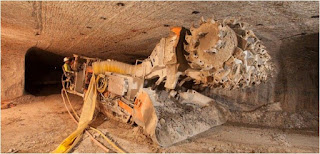Soda is the collective name for several forms of sodium carbonate, have weigh of molecule 106. The most commercially important form is the dehydrated product soda ash (Na2CO3). The decahydrate (Na2CO3.10 H2O) is also known as washing soda or sal soda. Soda ash is so called because it was once extracted from plant ashes; now almost all is manufactured by the Solvay or ammonia soda process. The primary users of soda are the glass and chemical industries. Sodium carbonate occurs in nature in combination with the bicarbonate as trona and is recovered from evaporated lakes in California. Baking soda (sodium bicarbonate, NaHCO3) is used as an effervescent agent in foods, cake soda and as a cleanser. Sodium carbonate have many applied use in Soap making.
In commercial sodium carbonate is mining product. Some production of sodium bicarbonate also as a side product so if this chemicals is produce deliberately will unable to compete the price. Baking soda may just modified from sodium carbonate to form sodium bicarbonate, and this product is not formed naturally, this must be made in industry.
Other product compounds manufactured from sodium carbonate are sodium bisulfite, sodium sulfite, sodium perborate, sodium linoleate and sodium thiosulfate. Sodium sulfite and bisulfite are used in photographic products and in pulp industry. Sodium perborate is used in dentifrices, deodorants, and cold wave neutralizers. Sodium thiosulfate is an antioxidant use in cosmetics and an image fixer in photography.
In commercial sodium carbonate is mining product. Some production of sodium bicarbonate also as a side product so if this chemicals is produce deliberately will unable to compete the price. Baking soda may just modified from sodium carbonate to form sodium bicarbonate, and this product is not formed naturally, this must be made in industry.
The uses of Sodium Carbonate:
Though widely used in the chemical industry, sodium carbonate, soda ash, is principally consumed by glass industry, in which about 7 million metric tons are needed annually. Large quantities are used as well in sewage treatment and in water softening for municipalities and industry. Sodium carbonate is also used in the production of the sodium acetate used in textile dyeing and leather tanning and for making sodium arsenate for use as pesticide. Natural sodium carbonate is obtained in the United States principally from brines of the dry lakes in southern California and from deep deposits in Wyoming.Other product compounds manufactured from sodium carbonate are sodium bisulfite, sodium sulfite, sodium perborate, sodium linoleate and sodium thiosulfate. Sodium sulfite and bisulfite are used in photographic products and in pulp industry. Sodium perborate is used in dentifrices, deodorants, and cold wave neutralizers. Sodium thiosulfate is an antioxidant use in cosmetics and an image fixer in photography.




Comments